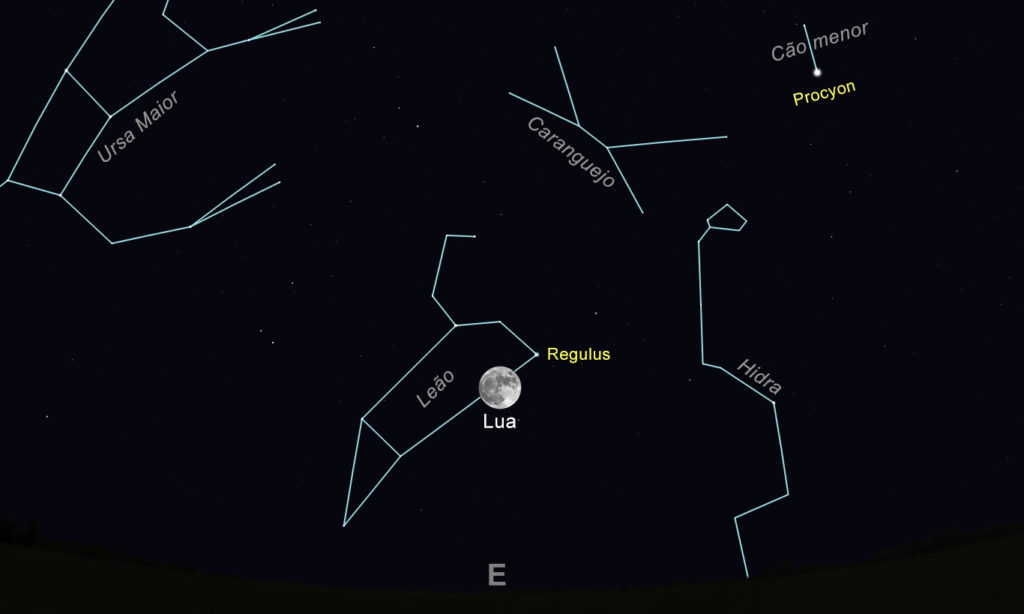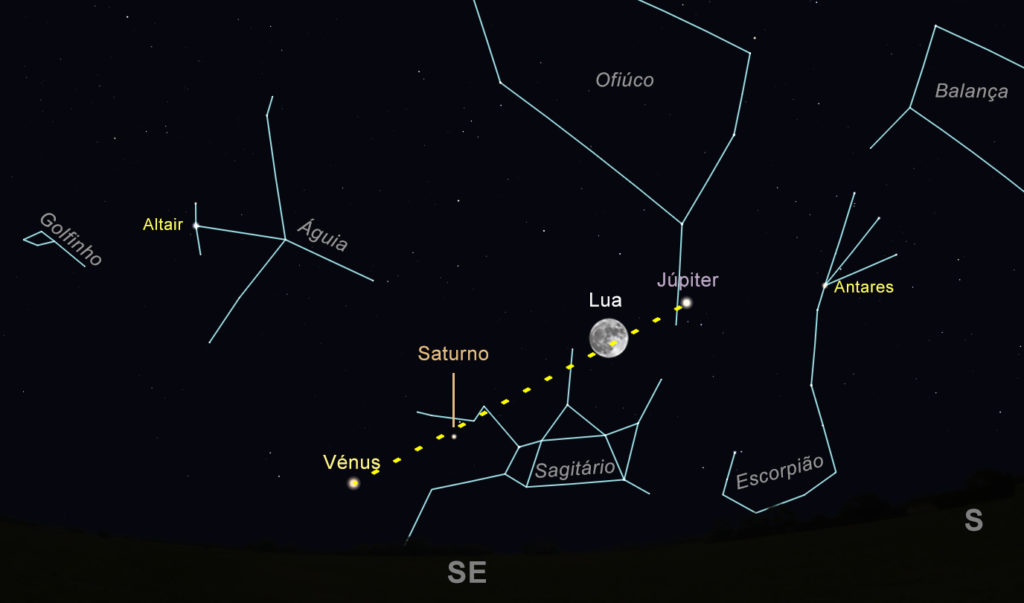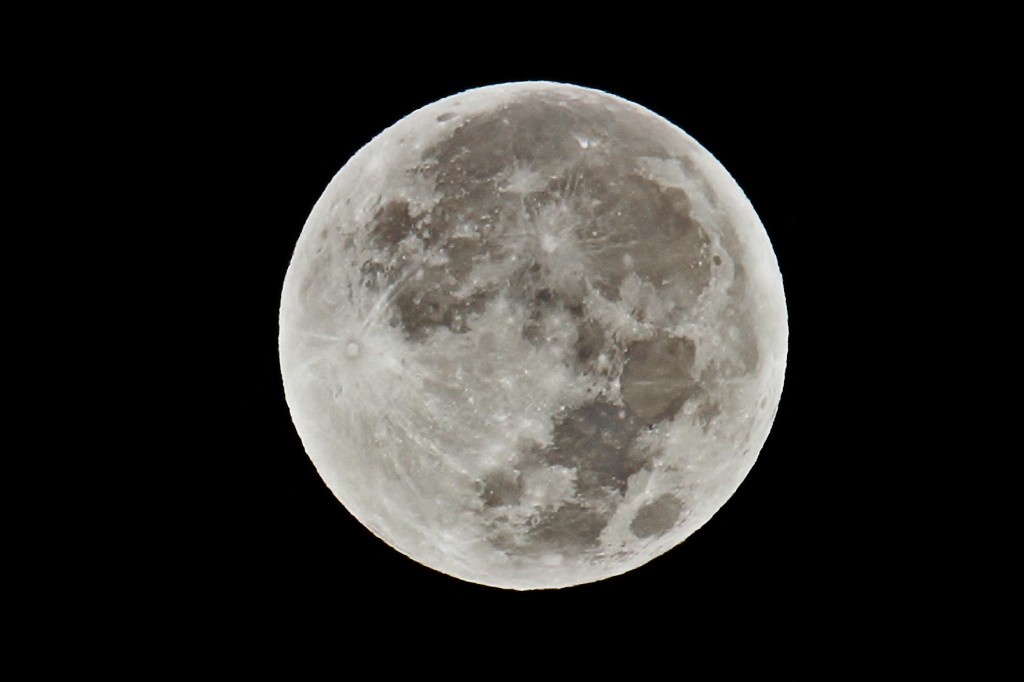This month, we're going to see Saturn again in the sky, now visible before dawn. On the 2nd, the Moon in a waning almost in new, rises close to the planet Saturn, more or less southeast, at 6:15.
On the 4th, the new moon occurs. Already growing, on the 10th, the Moon passes 6 degrees from the planet Mars. During this month, the planet will be visible to the Southwest as soon as night falls. Already on the 12th, our satellite reaches the crescent quarter.
On the 18th, with Venus moving closer and closer to the Sun and Saturn moving away from our star, the two planets will cross in the sky, and will pass within 1 degree of each other.

On the 19th, the second “super” full moon of three consecutive ones occurs. A “super” full moon is a full moon that occurs almost simultaneously with the perigee (point of closest approach to Earth).
The “super” Moon is in the constellation Leo, which rises just at dusk, 4 degrees from Regulus, the brightest star in this constellation.
In Latin, Regulus means “prince” or “little king”. In Arabic, this star is known as Qalb al-Asad, which means “the heart of the Lion”.
With an apparent magnitude of 1,35, Regulus is the 21st brightest star in the sky. But what we see in our sky as a star is actually a system of four stars — two binaries that orbit each other — 79 light-years away.
The largest of the 4 stars (from which most of the brightness of this “star” results is a bluish-white star in our sky) is called Regulus A. It is 3 times the diameter and 4 times the mass of the Sun, and with a temperature of more than 12 degrees, it is almost 200 times brighter than our star.
But this star rotates at a brutal speed of almost 350 km/s (by comparison, the sun rotates at 2 km/s)! This velocity distorts the star, which is considerably flatter at the poles than at the equator. This causes an effect known as gravitational dimming – the poles are 5 times brighter than the equator.
On the 26th the Moon reaches the waning quarter and on the 27th it is 4 degrees behind the planet Jupiter. The next day, the last of this month (don't forget that this is only 28 days old) and after advancing a little less than a hand in the sky, the Moon “passed” Jupiter.
These two now form a straight line with Saturn, which is 17 degrees from the Moon, and with Venus, which is 10 degrees from Saturn. This (apparent) alignment of Solar System objects is visible as soon as Venus is born, around 5:30 am.
Good observations.

Author Ricardo Cardoso Reis (Porto Planetarium and Institute of Astrophysics and Space Sciences)
Science in the Regional Press – Ciência Viva



















Comments